Fish Pond Ideas
A pond provides an exciting addition to any garden, even a small one. The popularity of such a water feature means that the materials and equipment needed to build and maintain a koi pond design ideas are readily available in a wide variety of price ranges.
Water adds a soothing, relaxing element to a garden ponds design ideas, attracting birds, and offering the wonderful sound of splashing water. Even the smallest pond can be fascinating for adults and children alike; and the environmental and biological benefits can be interesting and educational.
Before you decide to create a pond in your garden, you need to do a little research and planning. A pond is not something that is easy to move if, in a year or two, you do not like its location.
Following are some of the things you need to think about fish pond, and the materials that you will need to plan and build a beautiful small pond.
Where to Put the PondPonds need partial sun and partial shade. A good rule of thumb is to create shade for half the pond. Too much sun encourages the growth of unsightly algae.Do not dig a pond directly under a tree where you may damage the roots.Most people advise against planting trees or shrubs near ponds because falling leaves can foul the water. But some shade allows for cleaner water. If you plant a small tree or shrub nearby for shade, make sure that its roots will not disturb the liner. In fall, cover the pond with some screening to catch falling leaves. Then, in spring, empty the pond to clean and clear debris.
Many residential areas require a permit to build a pond. Your local government may require that the yard be fenced.
Check out local building codes and rules before you even begin to plan the pond. You don't want to be fined and you don't want the toddler next door to fall in.In areas with cold winters, the pond should be dug to a depth of over 3 feet to overwinter fish and plants.
Tips to Keep a Pond CleanTo avoid algae build up, add plants for oxygenation. A few floating plants, like water lilies will also shade the water.
Add a block of barley straw to the pond. It is an inexpensive, natural way to fight algae. As the barely straw decays, it produces a chemical that inhibits the growth of algae. Most pond equipment dealers stock it
- just make sure that you obtain the right amount or bale size for your pond. The dealer can tell you what you will need.
Do not over crowd fish. The general rule is 1 linear foot of fish per 25 square feet of pond surface. The tail does not count. Too many fish will foul the water.Prevent leaves from falling into the water. The decay of leaves produces harmful ammonia. You can just pick or skim them out.
Use a few buckets of pond water to water your garden or container plants. The plants will love it. Then add a few buckets of fresh water to the pond.
Clean the pond out in the spring. Syphon out the water. Use a net to capture the fish or tadpoles and store them in a large tub filled with the water you have taken out of your pond.
Clear the bottom of the pond of any plant debris and other gunk. Squirt and scrub down the liner. Do not use soap, detergent, or bleach as the chemicals will kill the fish upon their return.
Refill the pond and wait a day or two to replace the fish. Tap water contains chemicals that dissipate with time.
Water adds a soothing, relaxing element to a garden ponds design ideas, attracting birds, and offering the wonderful sound of splashing water. Even the smallest pond can be fascinating for adults and children alike; and the environmental and biological benefits can be interesting and educational.
Before you decide to create a pond in your garden, you need to do a little research and planning. A pond is not something that is easy to move if, in a year or two, you do not like its location.
Following are some of the things you need to think about fish pond, and the materials that you will need to plan and build a beautiful small pond.
Where to Put the PondPonds need partial sun and partial shade. A good rule of thumb is to create shade for half the pond. Too much sun encourages the growth of unsightly algae.Do not dig a pond directly under a tree where you may damage the roots.Most people advise against planting trees or shrubs near ponds because falling leaves can foul the water. But some shade allows for cleaner water. If you plant a small tree or shrub nearby for shade, make sure that its roots will not disturb the liner. In fall, cover the pond with some screening to catch falling leaves. Then, in spring, empty the pond to clean and clear debris.
Many residential areas require a permit to build a pond. Your local government may require that the yard be fenced.
Check out local building codes and rules before you even begin to plan the pond. You don't want to be fined and you don't want the toddler next door to fall in.In areas with cold winters, the pond should be dug to a depth of over 3 feet to overwinter fish and plants.
Tips to Keep a Pond CleanTo avoid algae build up, add plants for oxygenation. A few floating plants, like water lilies will also shade the water.
Add a block of barley straw to the pond. It is an inexpensive, natural way to fight algae. As the barely straw decays, it produces a chemical that inhibits the growth of algae. Most pond equipment dealers stock it
- just make sure that you obtain the right amount or bale size for your pond. The dealer can tell you what you will need.
Do not over crowd fish. The general rule is 1 linear foot of fish per 25 square feet of pond surface. The tail does not count. Too many fish will foul the water.Prevent leaves from falling into the water. The decay of leaves produces harmful ammonia. You can just pick or skim them out.
Use a few buckets of pond water to water your garden or container plants. The plants will love it. Then add a few buckets of fresh water to the pond.
Clean the pond out in the spring. Syphon out the water. Use a net to capture the fish or tadpoles and store them in a large tub filled with the water you have taken out of your pond.
Clear the bottom of the pond of any plant debris and other gunk. Squirt and scrub down the liner. Do not use soap, detergent, or bleach as the chemicals will kill the fish upon their return.
Refill the pond and wait a day or two to replace the fish. Tap water contains chemicals that dissipate with time.
Category : Lifestyle

Related searches
Reviews (2)
Ter. R.
Apr 24, 2016
They might be nice ponds, but the pictures are fuzzy and shaped weird.
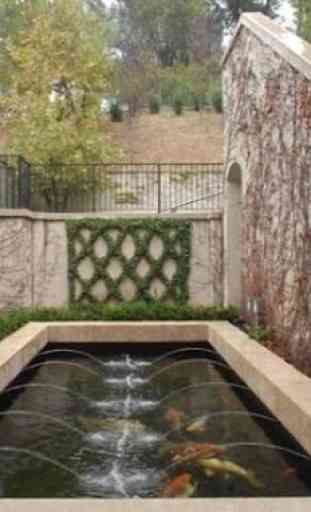
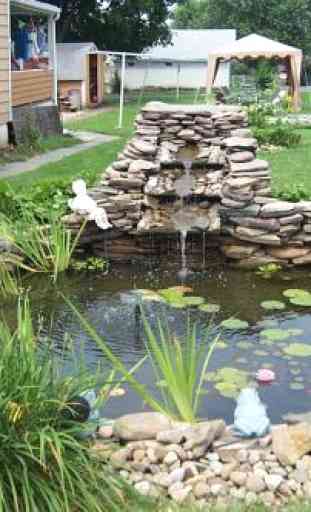
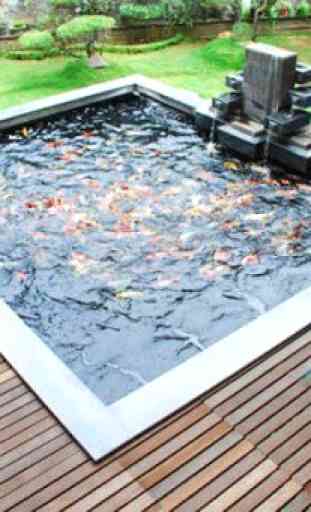
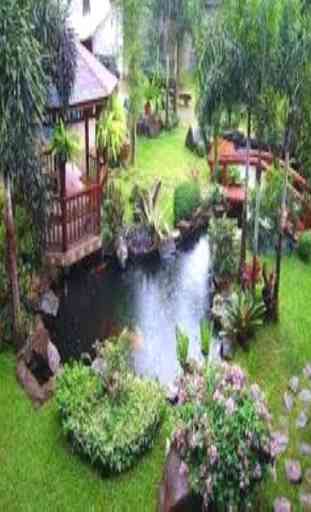
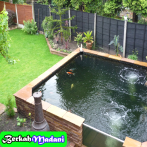
i understand that leaves is not good in pound